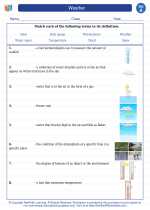Barometer: Understanding Atmospheric Pressure
A barometer is a scientific instrument used to measure atmospheric pressure. Atmospheric pressure is the force exerted by the weight of the air above us, and it plays a crucial role in determining the weather patterns in a particular area. Understanding how to measure and interpret atmospheric pressure is key to predicting weather changes and understanding weather systems.
Types of Barometers
There are two main types of barometers: mercury barometers and aneroid barometers.
Mercury Barometer
A mercury barometer consists of a long glass tube filled with mercury and inverted into a dish of mercury. The height of the mercury column in the tube changes with variations in atmospheric pressure. A scale is used to measure this height, which provides a reading of the atmospheric pressure.
Aneroid Barometer
An aneroid barometer uses a small, flexible metal box called an aneroid cell. As the atmospheric pressure changes, the cell expands or contracts, which is then translated into a pressure reading on a dial. Aneroid barometers are commonly used in homes and offices as they are safer and more convenient than mercury barometers.
Measuring Atmospheric Pressure
Atmospheric pressure is typically measured in units called millibars (mb) or inches of mercury (inHg). Standard atmospheric pressure at sea level is around 1013.25 millibars or 29.92 inches of mercury.
Using a Barometer
Barometers are used to monitor changes in atmospheric pressure, which can indicate the likelihood of certain weather conditions. A rapid decrease in pressure may indicate an approaching storm, while a steady high pressure often means fair weather.
Study Guide
- What is a barometer?
- Explain the difference between a mercury barometer and an aneroid barometer.
- How is atmospheric pressure measured?
- What are the typical units used to measure atmospheric pressure?
- How are barometers used in predicting weather changes?
Understanding barometers and atmospheric pressure is a fundamental aspect of meteorology and weather forecasting. By learning about these concepts, you'll gain a better understanding of the factors that influence our weather patterns.
.◂Science Worksheets and Study Guides First Grade. Weather
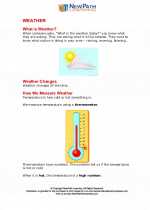
 Activity Lesson
Activity Lesson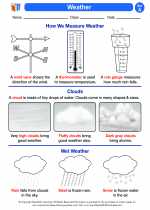
 Worksheet/Answer key
Worksheet/Answer key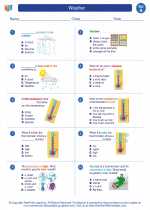
 Worksheet/Answer key
Worksheet/Answer key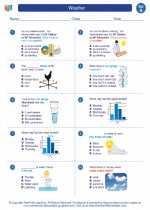
 Worksheet/Answer key
Worksheet/Answer key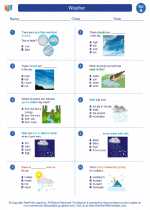
 Worksheet/Answer key
Worksheet/Answer key
 Vocabulary/Answer key
Vocabulary/Answer key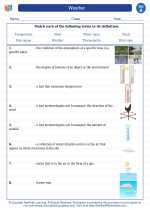
 Vocabulary/Answer key
Vocabulary/Answer key